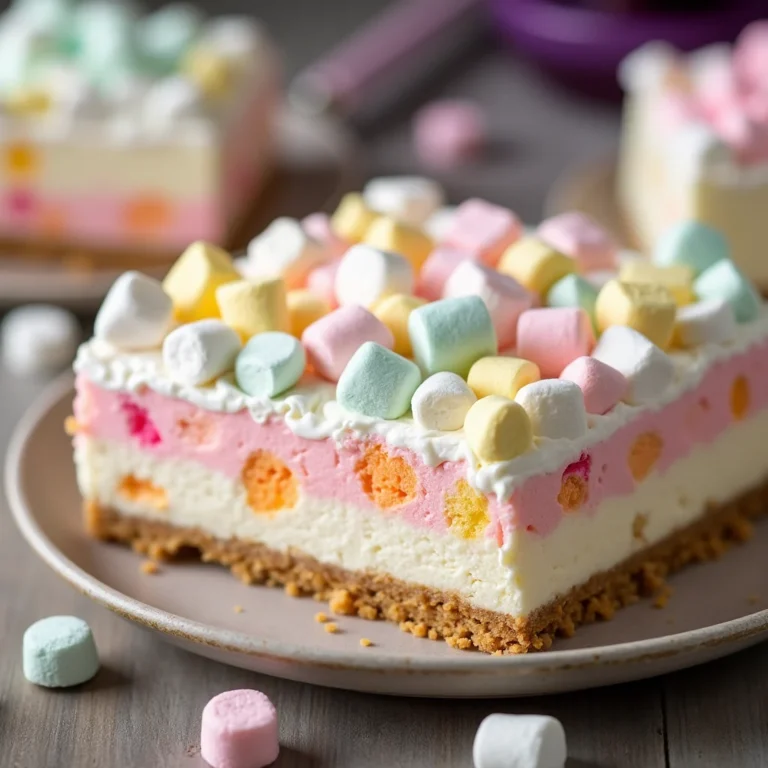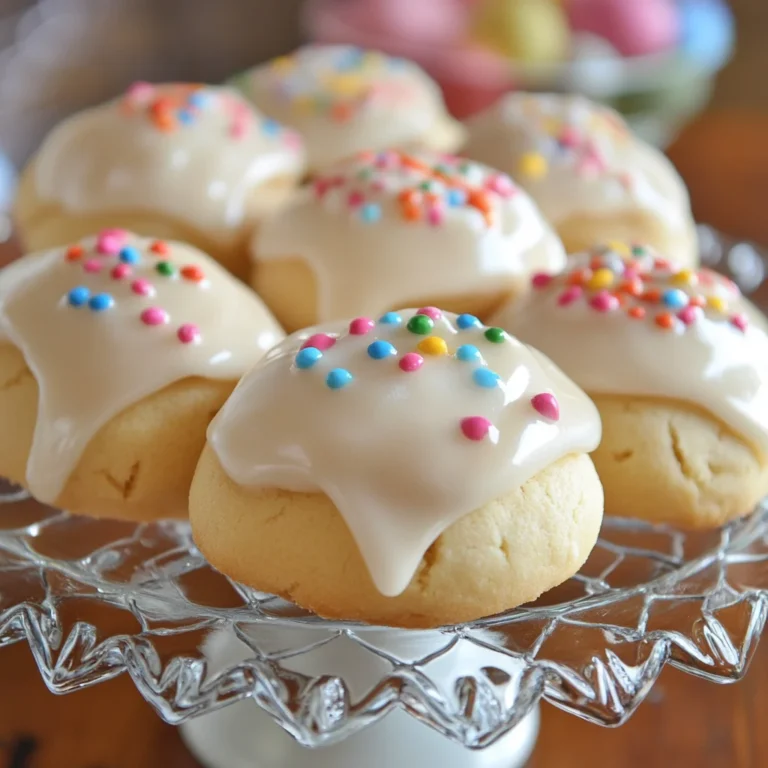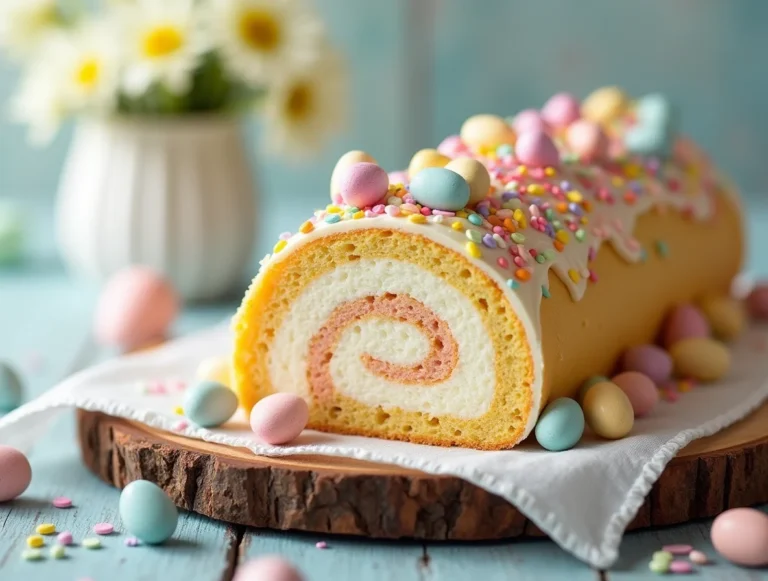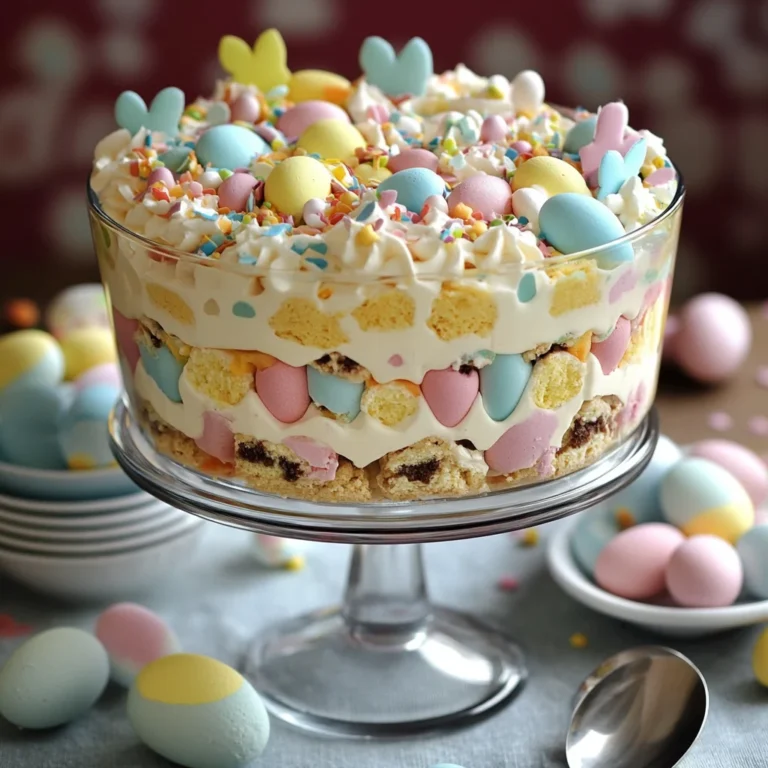Bunny Buns

Description: These adorable Bunny Buns are soft, slightly sweet bread rolls shaped to resemble cute bunnies. They’re a delightful and festive addition to any Easter brunch, spring gathering, or simply a fun baking project with kids.
Why you will love this recipe: These bunny buns are more than just a pretty face! They are incredibly soft and fluffy, with a subtle sweetness that makes them irresistible. The shaping process is surprisingly easy and fun, turning baking into a creative activity. Whether you choose to make the dough from scratch or use a pre-made option, the resulting bunny buns are guaranteed to be a crowd-pleaser. They’re perfect for dipping in soups, enjoying with butter and jam, or simply devouring on their own. The visual appeal alone makes them a standout, adding a touch of whimsy to any table.
Introduction
Easter is a time for celebration, family, and delicious food! And what better way to add a touch of whimsy and charm to your Easter table than with these delightful Bunny Buns? These soft, fluffy bread rolls, shaped into adorable bunnies, are a guaranteed hit with both kids and adults.
This recipe offers two options: making the dough from scratch for a truly homemade experience or using pre-made refrigerated dough for a quicker and easier approach. Whichever method you choose, the result will be a batch of cute and delicious bunny buns that are perfect for enjoying with butter, jam, or as a side to your favorite Easter meal.
The process of shaping the buns is surprisingly simple and fun, making it a great activity to do with children. Imagine the joy on their faces as they create their own little bunny families! These bunny buns are not just a treat for the taste buds; they are a treat for the eyes as well, adding a festive and playful touch to any occasion.
So, whether you’re a seasoned baker or just starting out, give these Bunny Buns a try. They’re a delightful way to celebrate the spirit of Easter and create lasting memories with your loved ones.
Ingredients:
For Homemade Dough:
- 1 cup warm milk (about 105-115°F)
- 1 tablespoon yeast (active dry or instant)
- 4 ½ cups all-purpose flour, plus more for dusting
- 1 teaspoon salt
- ¼ cup sugar, divided (reserve 1 teaspoon)
- 1 large egg
- 3 tablespoons unsalted butter, melted and cooled slightly
For Pre-Made Dough:
- 2 cans (11-13 oz each) refrigerated Pillsbury French Bread (or your preferred refrigerated bread dough)
- 3 tablespoons unsalted butter, melted
- 1 tablespoon granulated sugar (optional, for sprinkling)

Preparation:
For Homemade Dough:
Step 1: Activate the Yeast
In a small mixing bowl, combine the warm milk, yeast, and 1 teaspoon of the sugar. Stir gently to combine. Let this mixture sit for about 5-10 minutes, or until the yeast is foamy. This step is crucial as it ensures that the yeast is alive and active, which will lead to a successful rise for your dough. The foamy appearance indicates that the yeast is consuming the sugar and producing carbon dioxide, the key to creating light and airy bread.
Step 2: Combine Dry Ingredients
In a large mixing bowl, whisk together the flour, salt, and remaining sugar (the ¼ cup minus the teaspoon used for the yeast). Whisking these ingredients ensures that they are evenly distributed, preventing pockets of saltiness or sweetness in your final product. This is especially important when using a stand mixer, as the mixing process can sometimes leave some areas of the dough less incorporated than others.
Step 3: Combine Wet and Dry Ingredients
Add the milk and yeast mixture to the flour mixture. Using a stand mixer fitted with a dough hook (or by hand), mix on low speed until the ingredients start to come together. This is the initial stage of dough formation, where the flour starts to absorb the liquid and form a shaggy dough. Be patient at this stage, as it may take a few minutes for the ingredients to fully incorporate.
Step 4: Incorporate Egg and Butter
Slowly add the egg and melted (and cooled) butter to the dough. Continue mixing on low speed until the dough starts to become smoother. The egg adds richness and structure to the dough, while the butter contributes to its tenderness and flavor. Make sure the butter is cooled slightly to avoid cooking the egg or hindering the yeast activity.
Step 5: Knead the Dough
Increase the mixer speed to medium and knead the dough for about 5-7 minutes using the dough hook. If kneading by hand, turn the dough out onto a lightly floured surface and knead for about 8-10 minutes. The dough should become smooth, elastic, and slightly tacky (but not sticky). Proper kneading develops the gluten in the flour, which is essential for creating a bread with good structure and chew.
Step 6: First Rise
Place the dough in a large bowl that has been lightly sprayed with non-stick cooking spray. Turn the dough to coat it lightly with the oil. Cover the bowl with plastic wrap (or a clean kitchen towel) and let the dough rise in a warm place for about 1 ½ – 2 hours, or until it has doubled in size. The warmth encourages the yeast to ferment and produce carbon dioxide, causing the dough to rise.
Step 7: Shape the Bunny Buns
Once the dough has doubled in size, gently deflate it. Turn it out onto a lightly floured surface. Divide the dough into 12 equal pieces. To ensure even sizes, you can first cut the dough in half, then cut each half in half again, and so on. This will give you 4 pieces. Then cut each of those pieces into thirds, for a total of 12 pieces.
Step 8: Form the Bunny Shape
Roll out each of the 12 dough pieces into a long rope, approximately 10 inches in length. An oiled surface will help prevent the dough from sticking. Bring the two ends of the rope up to form a “U” shape. Leaving a small circle at the bottom of the U, overlap the ends once, then twist them together again, leaving the ends pinched to resemble bunny ears. Repeat this process with 6 of the dough ropes, creating 6 bunny shapes.
Step 9: Add the Tails
Cut the remaining 6 pieces of dough into smaller pieces to form the bunny tails. Roll each small piece into a ball. Attach a dough ball to the back of each bunny shape, pressing it gently to secure it.
Step 10: Second Rise
Place the shaped bunny buns on a baking sheet lined with parchment paper. Cover them loosely with plastic wrap or a clean kitchen towel and let them rise again for about 20-30 minutes. This second rise allows the buns to become even lighter and fluffier.
Step 11: Bake the Bunny Buns
Preheat your oven to 350°F (175°C). Bake the bunny buns for about 15-20 minutes, or until they are golden brown. Keep a close eye on them during the last few minutes of baking to prevent them from burning.
Step 12: Brush with Butter and Enjoy!
Remove the bunny buns from the oven and immediately brush them with melted butter. This will give them a beautiful sheen and add a delicious richness to the flavor. Let them cool slightly before serving.
For Pre-Made Dough:
Step 1: Prepare the Dough
Preheat your oven to 350°F (175°C). Line a baking sheet with parchment paper. Open the cans of refrigerated bread dough and carefully remove the dough.
Step 2: Shape the Bunny Buns
Follow steps 7-9 from the “For Homemade Dough” instructions to shape the bunny buns.
Step 3: Bake the Bunny Buns
Place the shaped bunny buns on the prepared baking sheet. Bake for 20-30 minutes, or until they are golden brown.
Step 4: Add Sweetness (Optional)
Remove the bunny buns from the oven and immediately brush them with melted butter. If desired, sprinkle them with a pinch of granulated sugar for a touch of added sweetness. Let them cool slightly before serving.
COOKING Rating:
Easy to Medium (depending on whether you use homemade or pre-made dough)
Serving Suggestions:
- Serve warm with butter, jam, or honey.
- Enjoy as a side to your favorite Easter meal or spring brunch.
- Use them to make mini sandwiches for a fun and festive lunch.
- Dip them in soup or stew.
- Let kids decorate them with frosting and sprinkles for a fun activity.
Tips:
- Make sure your milk is warm, but not too hot, when activating the yeast. Too hot of liquid can kill the yeast.
- If the dough is too sticky, add a little more flour, a tablespoon at a time, until it becomes easier to handle.
- Don’t over-knead the dough, as this can make it tough.
- If you don’t have a stand mixer, you can knead the dough by hand on a lightly floured surface.
- For a shinier finish, brush the bunny buns with an egg wash (1 egg beaten with 1 tablespoon of water) before baking.
- Store leftover bunny buns in an airtight container at room temperature for up to 2 days. You can also freeze them for longer storage.
Prep Time:
- Homemade Dough: 20 minutes
- Pre-Made Dough: 10 minutes
Cook Time:
15-30 minutes (depending on the oven and dough used)
Rising Time:
- Homemade Dough: 1 hour 30 minutes – 2 hours
Total Time:
- Homemade Dough: 2 hours 5 minutes – 2 hours 30 minutes
- Pre-Made Dough: 30-40 minutes
Nutritional Information: (Approximate, will vary based on ingredients and serving size)
Calories: Approximately 250-300 per bun Protein: 6-8 grams Sodium: 200-300 mg
Conclusion
These Bunny Buns are a delightful addition to any Easter celebration or spring gathering. Their adorable shape and soft, slightly sweet flavor will appeal to both children and adults alike. Whether you choose to make the dough from scratch or use pre-made dough, the process is fun and rewarding. So gather your ingredients, put on your apron, and get ready to create some adorable and delicious Bunny Buns that will bring joy to your table and smiles to your loved ones’ faces!
Questions and Answers about Bunny Buns:
Q1: Can I use a different type of flour for the homemade dough?
A: While all-purpose flour is recommended for its consistent results, you can experiment with other types of flour. Bread flour will create a slightly chewier bun, while whole wheat flour will add a nutty flavor and denser texture. Keep in mind that you may need to adjust the amount of liquid depending on the type of flour you use.
Q2: Can I make these bunny buns ahead of time?
A: Yes, you can! You can prepare the dough up to the shaping stage and store it in the refrigerator overnight. In the morning, let the dough come to room temperature for about 30 minutes before shaping and baking. You can also bake the bunny buns ahead of time and freeze them for later use. Simply thaw them at room temperature and warm them in the oven before serving.
Q3: Can I add fillings to these bunny buns?
A: Absolutely! You can get creative with fillings. Before shaping the dough, you could flatten it slightly and add a spoonful of jam, Nutella, or even savory fillings like cream cheese and chives. Be sure to seal the edges of the dough tightly to prevent the filling from leaking out during baking.
Q4: My dough isn’t rising properly. What could be the reason?
A: Several factors can affect the dough’s rising ability. The most common reason is that the yeast is not active. Make sure your milk is warm, but not too hot, and that your yeast is within its expiration date. Another factor could be the temperature of your rising environment. The ideal temperature for rising dough is around 75-80°F.
Q5: Can I make these bunny buns without using a stand mixer?
A: Yes, you can definitely make these bunny buns without a stand mixer! Simply mix the ingredients in a large bowl using a wooden spoon or your hands until a shaggy dough forms. Then, turn the dough out onto a lightly floured surface and knead it by hand for about 8-10 minutes, or until it becomes smooth and elastic. The kneading process is essential for developing the gluten in the flour, which gives the bread its structure and chew. While a stand mixer can make the process easier, kneading by hand is a perfectly viable option.

Bunny Buns
Ingredients
- For Homemade Dough:
- 1 cup warm milk about 105-115°F
- 1 tablespoon yeast active dry or instant
- 4 ½ cups all-purpose flour plus more for dusting
- 1 teaspoon salt
- ¼ cup sugar divided (reserve 1 teaspoon)
- 1 large egg
- 3 tablespoons unsalted butter melted and cooled slightly
- For Pre-Made Dough:
- 2 cans 11-13 oz each refrigerated Pillsbury French Bread (or your preferred refrigerated bread dough)
- 3 tablespoons unsalted butter melted
- 1 tablespoon granulated sugar optional, for sprinkling
Instructions
- For Homemade Dough:
- Step 1: Activate the Yeast
- In a small mixing bowl, combine the warm milk, yeast, and 1 teaspoon of the sugar. Stir gently to combine. Let this mixture sit for about 5-10 minutes, or until the yeast is foamy. This step is crucial as it ensures that the yeast is alive and active, which will lead to a successful rise for your dough. The foamy appearance indicates that the yeast is consuming the sugar and producing carbon dioxide, the key to creating light and airy bread.
- Step 2: Combine Dry Ingredients
- In a large mixing bowl, whisk together the flour, salt, and remaining sugar (the ¼ cup minus the teaspoon used for the yeast). Whisking these ingredients ensures that they are evenly distributed, preventing pockets of saltiness or sweetness in your final product. This is especially important when using a stand mixer, as the mixing process can sometimes leave some areas of the dough less incorporated than others.
- Step 3: Combine Wet and Dry Ingredients
- Add the milk and yeast mixture to the flour mixture. Using a stand mixer fitted with a dough hook (or by hand), mix on low speed until the ingredients start to come together. This is the initial stage of dough formation, where the flour starts to absorb the liquid and form a shaggy dough. Be patient at this stage, as it may take a few minutes for the ingredients to fully incorporate.
- Step 4: Incorporate Egg and Butter
- Slowly add the egg and melted (and cooled) butter to the dough. Continue mixing on low speed until the dough starts to become smoother. The egg adds richness and structure to the dough, while the butter contributes to its tenderness and flavor. Make sure the butter is cooled slightly to avoid cooking the egg or hindering the yeast activity.
- Step 5: Knead the Dough
- Increase the mixer speed to medium and knead the dough for about 5-7 minutes using the dough hook. If kneading by hand, turn the dough out onto a lightly floured surface and knead for about 8-10 minutes. The dough should become smooth, elastic, and slightly tacky (but not sticky). Proper kneading develops the gluten in the flour, which is essential for creating a bread with good structure and chew.
- Step 6: First Rise
- Place the dough in a large bowl that has been lightly sprayed with non-stick cooking spray. Turn the dough to coat it lightly with the oil. Cover the bowl with plastic wrap (or a clean kitchen towel) and let the dough rise in a warm place for about 1 ½ – 2 hours, or until it has doubled in size. The warmth encourages the yeast to ferment and produce carbon dioxide, causing the dough to rise.
- Step 7: Shape the Bunny Buns
- Once the dough has doubled in size, gently deflate it. Turn it out onto a lightly floured surface. Divide the dough into 12 equal pieces. To ensure even sizes, you can first cut the dough in half, then cut each half in half again, and so on. This will give you 4 pieces. Then cut each of those pieces into thirds, for a total of 12 pieces.
- Step 8: Form the Bunny Shape
- Roll out each of the 12 dough pieces into a long rope, approximately 10 inches in length. An oiled surface will help prevent the dough from sticking. Bring the two ends of the rope up to form a “U” shape. Leaving a small circle at the bottom of the U, overlap the ends once, then twist them together again, leaving the ends pinched to resemble bunny ears. Repeat this process with 6 of the dough ropes, creating 6 bunny shapes.
- Step 9: Add the Tails
- Cut the remaining 6 pieces of dough into smaller pieces to form the bunny tails. Roll each small piece into a ball. Attach a dough ball to the back of each bunny shape, pressing it gently to secure it.
- Step 10: Second Rise
- Place the shaped bunny buns on a baking sheet lined with parchment paper. Cover them loosely with plastic wrap or a clean kitchen towel and let them rise again for about 20-30 minutes. This second rise allows the buns to become even lighter and fluffier.
- Step 11: Bake the Bunny Buns
- Preheat your oven to 350°F (175°C). Bake the bunny buns for about 15-20 minutes, or until they are golden brown. Keep a close eye on them during the last few minutes of baking to prevent them from burning.
- Step 12: Brush with Butter and Enjoy!
- Remove the bunny buns from the oven and immediately brush them with melted butter. This will give them a beautiful sheen and add a delicious richness to the flavor. Let them cool slightly before serving.
- For Pre-Made Dough:
- Step 1: Prepare the Dough
- Preheat your oven to 350°F (175°C). Line a baking sheet with parchment paper. Open the cans of refrigerated bread dough and carefully remove the dough.
- Step 2: Shape the Bunny Buns
- Follow steps 7-9 from the “For Homemade Dough” instructions to shape the bunny buns.
- Step 3: Bake the Bunny Buns
- Place the shaped bunny buns on the prepared baking sheet. Bake for 20-30 minutes, or until they are golden brown.
- Step 4: Add Sweetness (Optional)
- Remove the bunny buns from the oven and immediately brush them with melted butter. If desired, sprinkle them with a pinch of granulated sugar for a touch of added sweetness. Let them cool slightly before serving.






